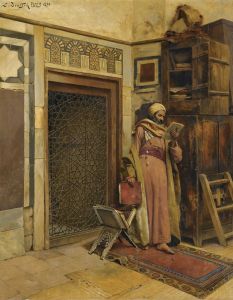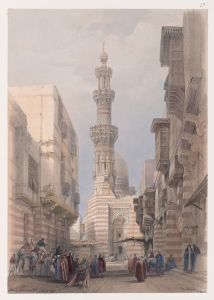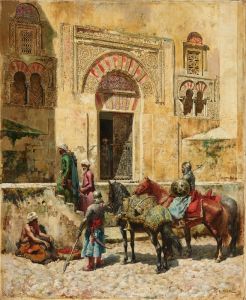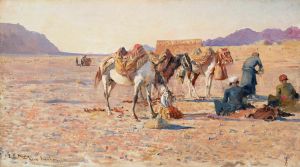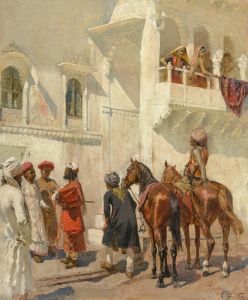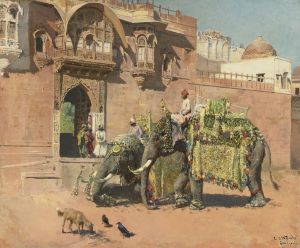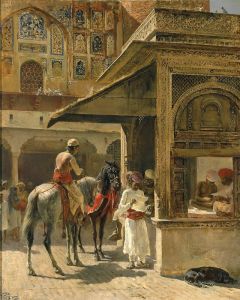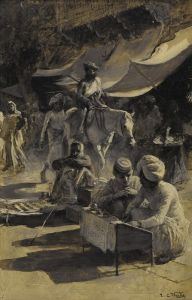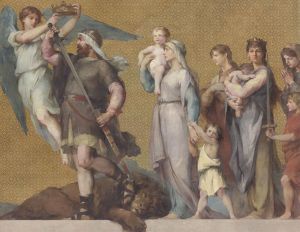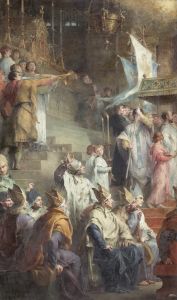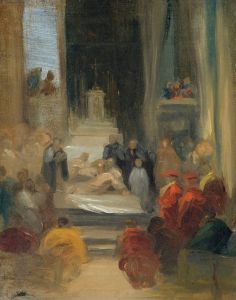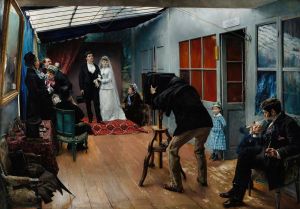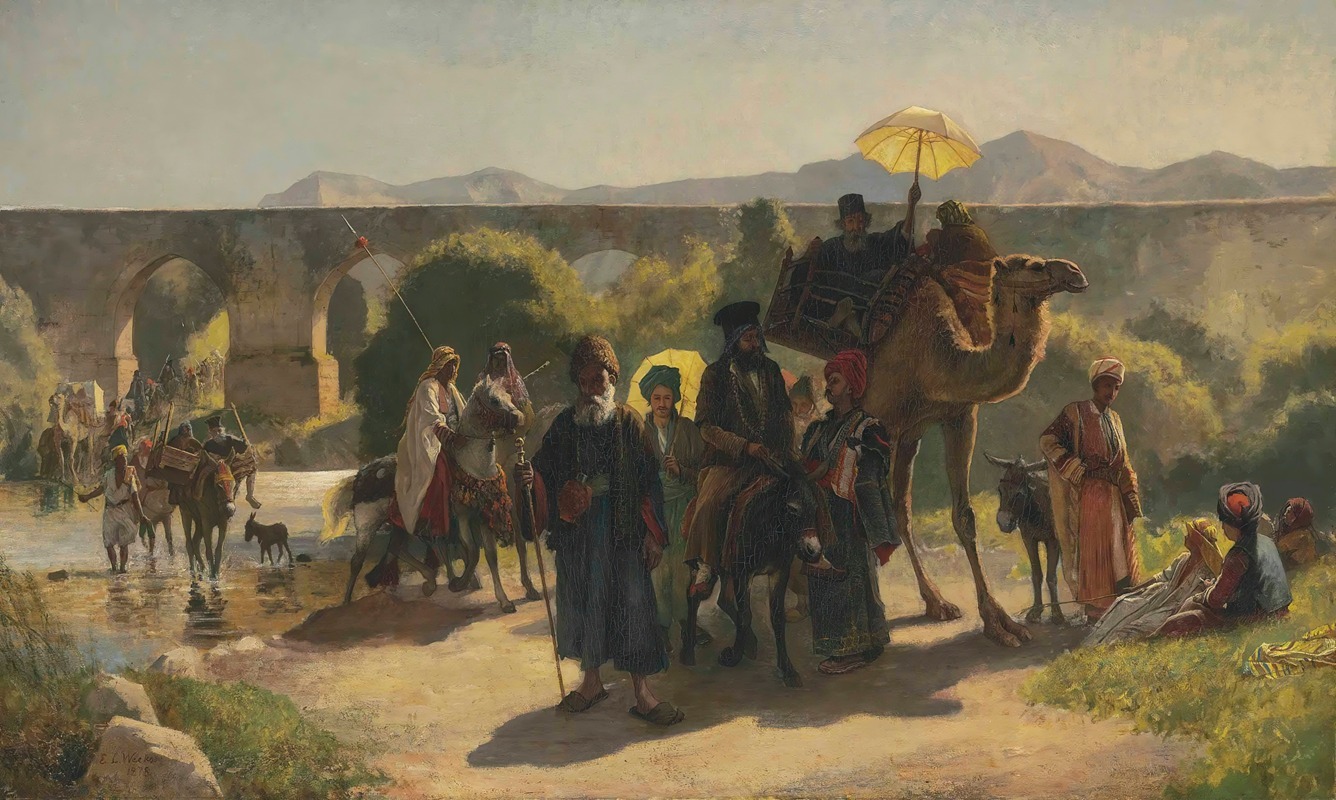
A Pilgrimage to the Jordan
A hand-painted replica of Edwin Lord Weeks’s masterpiece A Pilgrimage to the Jordan, meticulously crafted by professional artists to capture the true essence of the original. Each piece is created with museum-quality canvas and rare mineral pigments, carefully painted by experienced artists with delicate brushstrokes and rich, layered colors to perfectly recreate the texture of the original artwork. Unlike machine-printed reproductions, this hand-painted version brings the painting to life, infused with the artist’s emotions and skill in every stroke. Whether for personal collection or home decoration, it instantly elevates the artistic atmosphere of any space.
Edwin Lord Weeks was an American artist known for his Orientalist paintings, which often depicted scenes from his travels in the Middle East and South Asia. Born in Boston in 1849, Weeks developed an early interest in art and travel, which led him to study painting in Paris under the tutelage of renowned artists such as Jean-Léon Gérôme. His work is characterized by its detailed representation of exotic locales and vibrant use of color, capturing the essence of the places he visited.
"A Pilgrimage to the Jordan" is one of Weeks' notable works, showcasing his fascination with the Middle East. The painting depicts a scene along the Jordan River, a site of significant religious and historical importance. The Jordan River is a key geographical feature in the region, mentioned frequently in biblical texts, and is considered sacred by several religious traditions. It is believed to be the site where Jesus was baptized by John the Baptist, making it a popular destination for pilgrims.
In this painting, Weeks captures a group of pilgrims making their way to the river, likely to partake in a ritual or religious observance. The composition is marked by its attention to detail and the artist's ability to convey the atmosphere of the scene. The figures are depicted in traditional attire, suggesting their cultural and religious backgrounds, and are set against a backdrop that highlights the natural beauty of the landscape. The use of light and shadow in the painting adds depth and dimension, drawing the viewer's eye to the central figures and the serene waters of the Jordan.
Weeks' work is often praised for its ethnographic accuracy and his ability to portray the diverse cultures he encountered during his travels. His paintings provide a window into the 19th-century Western perception of the East, reflecting both the fascination and the romanticism that characterized Orientalist art of the period. "A Pilgrimage to the Jordan" is no exception, as it embodies the themes of exploration and cultural encounter that were central to Weeks' artistic vision.
Throughout his career, Weeks traveled extensively, visiting countries such as Morocco, Egypt, India, and Persia. These journeys greatly influenced his work, allowing him to gather firsthand experiences and observations that he later translated into his paintings. His dedication to capturing the essence of the places he visited earned him a reputation as one of the leading Orientalist painters of his time.
Today, Edwin Lord Weeks' paintings, including "A Pilgrimage to the Jordan," are held in high regard and can be found in various art museums and private collections around the world. His work continues to be studied and appreciated for its artistic merit and its contribution to the understanding of 19th-century Orientalism.





